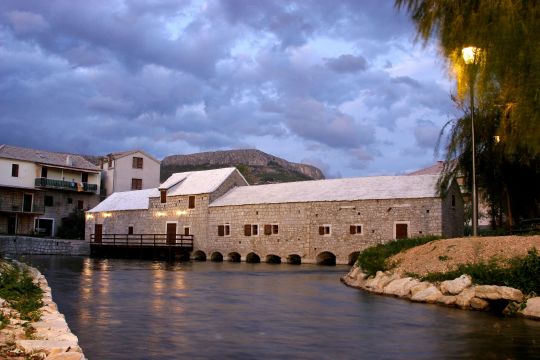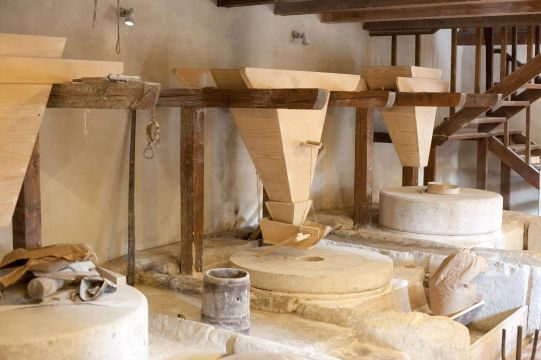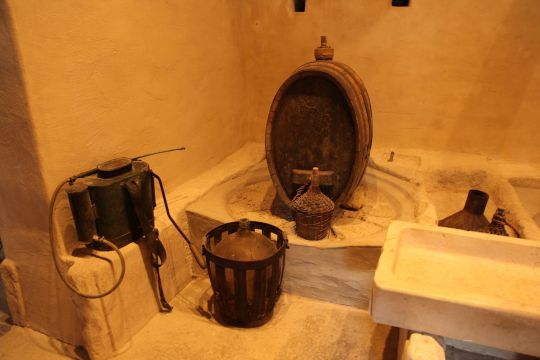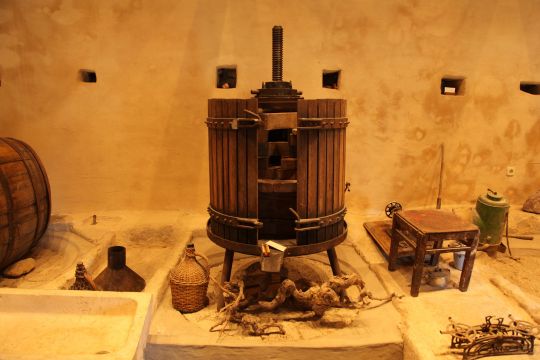Until the 20th century and the introduction of cement plants, this area distinctly focused on cattle breeding and agriculture. The Jadro River - locally called Rika - became the source of all life. Rich pastures and gardens grew on its banks, while water mills had been built since here since ancient times.
Rika was the only river with abundant water throughout the year in the large area extending from Šibenik to Omiš and thus became the regional centre of the miller's trade. Here, the grain was ground by the farmers from the inland area of Zagorje, who would descend from the Klis Mountain in autumn in wagons. The islanders also ground grain in the Solin mills. The boats would sail from the islands of Čiovo, Brač, Šolta, Korčula and wait in line on the banks of the river for their turn. The mills were usually built on the rapids, and if there was not enough natural force for the mill to operate, the water was diverted into a steep channel (jaža or kolovaja) from a greater height and hit the wires (propele) on the axle (vreteno) that would then drive the water wheel. There was a barn next to every mill to store the corn crib and bags of grain, while some even had a special waiting area for customers.
The mill "Gašpina mlinica" is one of the only preserved mills on the Jadro River. It was built in the early 18th century and the first records of it date back to 1711. Its structure consists of four low buildings in a row with gable roofs covered with stone plates. Over the centuries, its structure has been modified and upgraded, which is evident from the subsequently created windows on the facade. The building faces a north-south orientation and the water was directed through the channels from the east, free-falling to the lower parts of the mill, i.e. to the wires attached to the axles. The doors and windows mainly face west. An ancient stone stele was placed above the main entrance. The inside of the mill contains the static stone parts of the mill with stone water wheels. Based on the architecture and information gained from old literature sources, it appears that the oldest part of this complex is the southern one, while the middle one was rebuilt on higher ground after being destroyed by the river flooding in 1885. Mills remained a lucrative business for years, but the imminent demise of the industry was evident by the late 19th century. Nevertheless, Gašpina mlinica would continue to grind grain until the 1960s and a glass grinding shop was also located there in the 1930s. After that, it was deserted and left to the mercy of the elements. By the late 20th century, its roof had caved in and the inside was devastated. The town of Solin, working together with the Conversation Department of the Ministry of Culture, soon began the restoration process and five year later, in September 2008, they returned the building to Solin and its visitors, restored to its full former glory. In terms of historical continuity and ethnographic value, this mill represents a cultural monument and has been entered into the Registry of Cultural Monuments of the Republic of Croatia as such.
Contact person: Ana Marušić
E-mail: info.opgmarusic@gmail.com
Mobile phone: 0997221337










